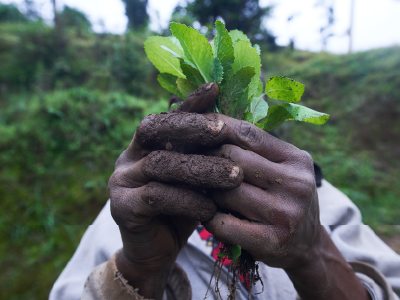Since 2007, FAO has been working with several partners to leverage Geographical Indications (GIs) as a tool for fostering sustainable development and sustainable food systems. FAO follows the “origin-linked specific-quality virtuous circle” methodology published in its 2010 guide titled Linking People, Places and Products, developed with a network of international researchers around the concept of sustainability.
FAO’s approach builds on the combination of three main elements:
- GIs can generate better incomes for all actors of local value chains, including small producers, thus leading to more investment, better livelihoods and better diets.
- GIs can have positive impacts at environmental level, by fostering the adoption of practices that preserve natural resources and biodiversity.
- GIs can sustain and improve social fairness, gender equity and preservation of local traditions.
To achieve these objectives, FAO fosters and supports public-private coordination, dialogue and action to:
- focus on an inclusive, bottom-up approach, with producers leading the GI process;
- build trust among small-scale producers for collective action;
- build partnerships with key market players, retailers and processors to increase effectiveness and scaling up investment;
- aim to promote equity, efficiency and sustainability by understanding how product specifications affect a territory, socially and environmentally;
- exploit synergies with other technical assistance activities;
- enhance the reputation of the territory, resulting in spillover effects;
- promote a sound legal and institutional GI system for producer and consumer protection; and
- share knowledge, lessons learned and successes to support the development of existing and new GIs.
The FAO approach builds on country experiences, promoting collective action along the value chain and public-private coordination and dialogue, to:
- develop and disseminate knowledge, practical guidance and information products;
- support the formulation and implementation of regional and national strategies, policies and investment for the sustainable development of GIs, such as the African Union’s Continental Strategy for Geographical Indications in Africa 2018-2023; and
- provide technical support to pilot projects around the world, in collaboration with countries and partners such as the Agence Française de Développement and the European Bank for Reconstruction and Development, for increased investment support.
FAO’s GI approach contributes to the Sustainable Development Goals 1, 2, 5, 8 and 12.



_small.png?sfvrsn=ac9f8d8_15)

